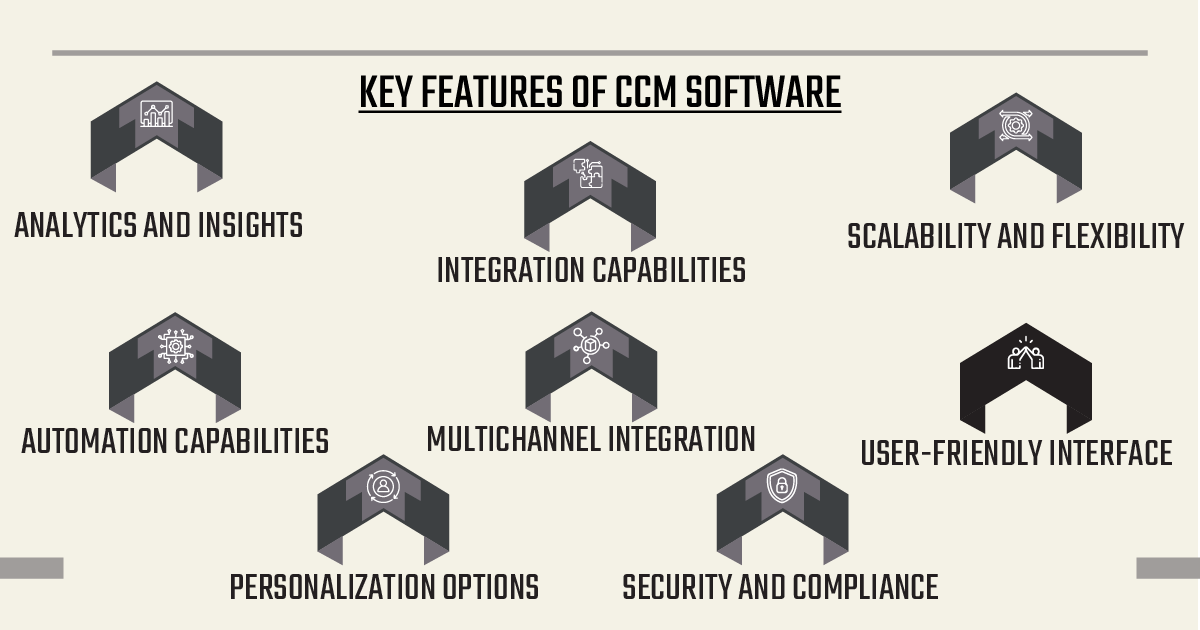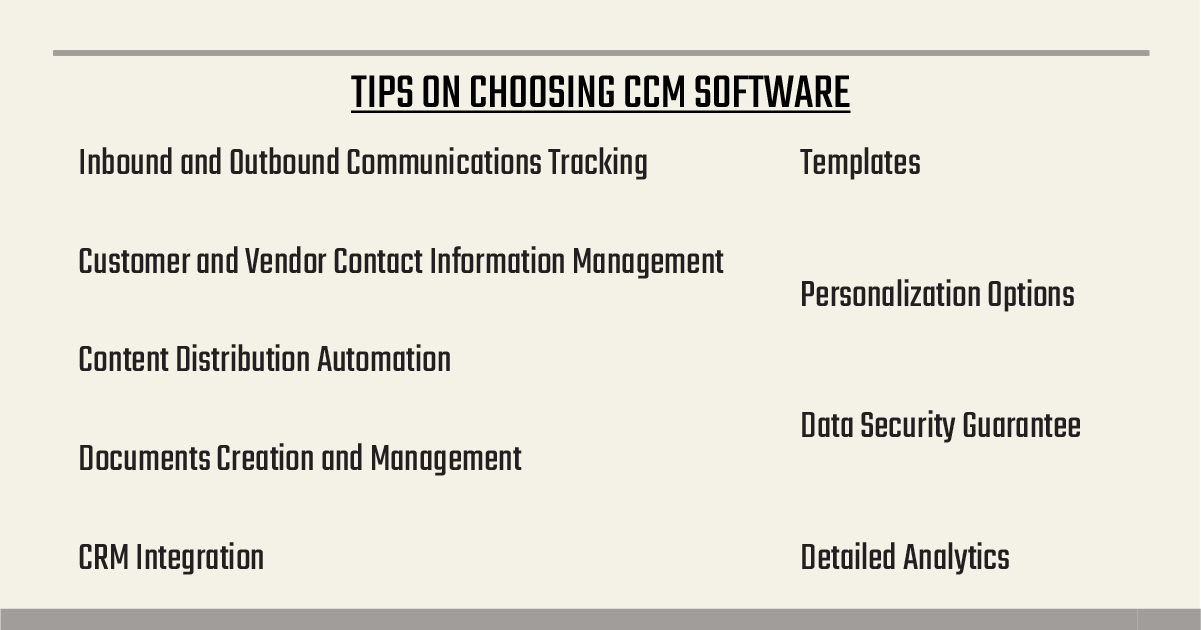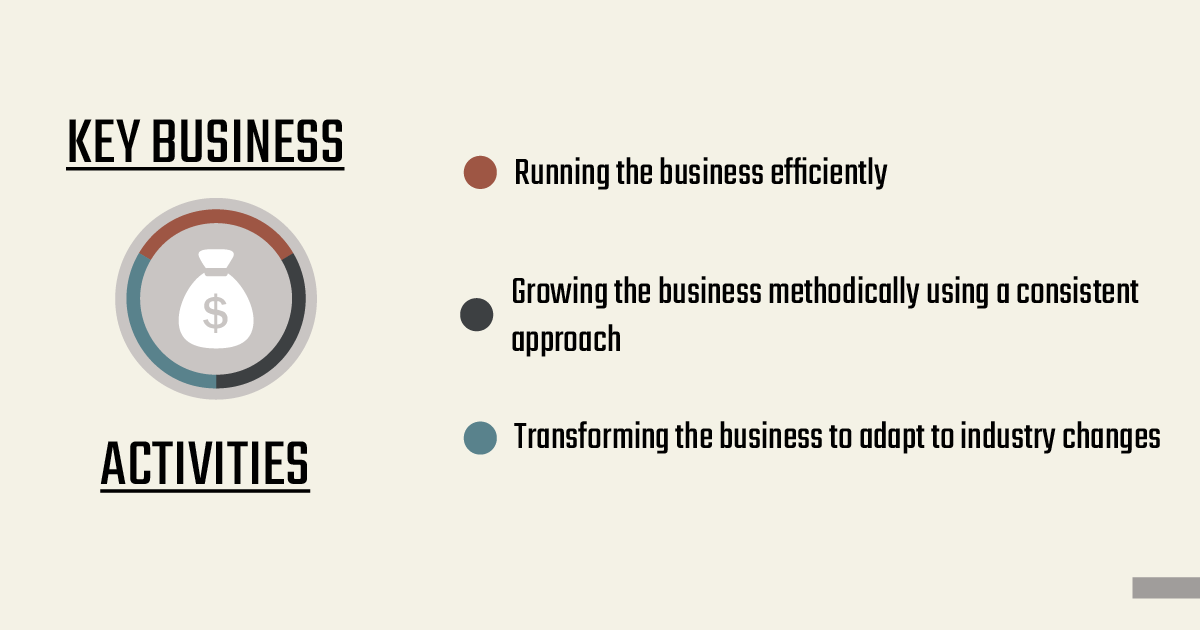Why is CCM software extremely expensive?
Have you ever wondered why Customer Communication Management (CCM) software comes with such a hefty price? It’s a question that many businesses, especially those in the insurance sector, grapple with. The truth is, while the initial cost may seem high, the long-term benefits and efficiencies it brings can far outweigh the expense.
According to research by MarketsandMarkets, the global CCM market size is projected to reach $6.5 billion by 2025, with a compound annual growth rate (CAGR) of 11.2%. This rapid growth underscores the increasing demand for CCM solutions across various industries.
But what makes it so expensive?
CCM software is designed to streamline and improve the way businesses communicate with their customers. It allows for the creation, management, and delivery of personalized communications across multiple channels, such as email, SMS, and print. This level of customization and integration requires a significant amount of development and maintenance, which contributes to the high cost of the software.
In this blog, discover the factors driving the high cost of CCM solution and explore how businesses can navigate these challenges to make informed decisions. From the complexities of customization to the need for robust security features, we’ll discuss the key elements contributing to the steep price of CCM software.
Table Of Content
➤ What is Customer Communication Software? And What Does it Do?
➤ Key features of CCM Software
➤ Tips on choosing CCM software
➤ Significant Technical Trends in Today’s Market
➤ Why is CCM Software Expensive?
➤ What are the Cost Reduction Recommendations ?
➤ Summary
➤ FAQ
What is Customer Communication Software? And What Does it Do?
‘Every interaction with your customers feels personalized, efficient, and seamless.’
This is the promise of customer communication software (CCS).
CCS is designed to enhance the way businesses communicate with their customers. Whether it’s sending personalized messages, managing customer feedback, or automating responses, CCS streamlines the communication process, leading to improved customer satisfaction and loyalty.
One of the key features of CCS is its ability to centralize customer communications. Instead of managing multiple platforms and channels, CCS provides a single, unified platform where businesses can manage all their communications. This not only saves time and resources but also ensures consistency and accuracy in messaging.
Another important aspect of CCS is its focus on personalization. By leveraging data and analytics, CCS allows businesses to tailor their communications to each customer’s preferences and behavior. This personalized approach not only enhances the customer experience but also increases engagement and conversion rates.
Key features of CCM Software

In modern customer communication management platforms, you’ll find a range of features and capabilities that can help you enhance your customer communication strategies. Here are some key features to look out for:
1. Multichannel Integration: Easily connect with your customers across various channels like email, chat, social media, and more. Your communication software should centralize all these channels for easy management and consistent interactions.
2. Automation Capabilities: Save time and streamline your processes by automating repetitive tasks such as sending out responses to common queries, routing messages to the right team members, or triggering follow-up actions based on customer interactions.
Check out the blog on how a lack of relevant and timely communication affects enterprises?
3. Personalization Options: Make each interaction feel tailored and meaningful by incorporating personalization features. Whether it’s addressing customers by name, referencing their previous interactions, or recommending relevant products/services, personalization enhances the customer experience.
4. Analytics and Insights: Gain valuable insights into your customer interactions with robust analytics and reporting tools. Track metrics like response times, customer satisfaction scores, conversation trends, and more to optimize your communication strategies continually.
5. Integration Capabilities: Ensure seamless collaboration across your organization by integrating your communication software with other essential tools such as CRM systems, help desk platforms, or project management software. This integration enables a holistic view of customer interactions and facilitates efficient workflows.
6. Security and Compliance: Protect sensitive customer data and adhere to regulatory requirements by choosing a communication software that prioritizes security and compliance features. Look for features like encryption, access controls, and compliance certifications to safeguard your customers’ information.
7. Scalability and Flexibility: As your business grows, your communication needs will evolve. Opt for a software solution that can scale alongside your business and adapt to changing requirements. Whether you’re a small startup or a large enterprise, flexibility is key to long-term success.
8. User-Friendly Interface: A user-friendly interface ensures that your team can quickly onboard and utilize the software effectively. Look for intuitive features, customizable dashboards, and comprehensive training resources to empower your team to deliver exceptional customer service.
Tips on choosing CCM software

When choosing CCM solution, you’ll find many providers in the market. Just like any tool, your business may have specific requirements for functionality in customer communication management software. Here are the basic features to consider:
1. Inbound and Outbound Communications Tracking: Monitor both incoming and outgoing communications.
2. Customer and Vendor Contact Information Management: Keep track of contact details for customers and vendors.
3. Content Distribution Automation: Automate the distribution of content.
4. Personalization Options: Customize communications for a personalized touch.
5. CRM Integration: Integrate with your Customer Relationship Management system.
6. Templates: Use pre-designed templates for efficient communication.
7. Documents Creation and Management: Create and manage documents easily.
8. Data Security Guarantee: Ensure data security.
9. Detailed Analytics: Access in-depth analytics for insights.
A CCM solution aims to optimize business messaging and ensure a consistent user experience across devices and communication channels. The ideal software integrates seamlessly with your existing systems, optimizes multichannel communications, and enhances customer engagement.
Significant Technical Trends in Today’s Market
Let’s explore some of the major trends currently unfolding in the broader CCM market:
1. Increasing Migration to Cloud Platforms: Many organizations are shifting their business systems to cloud platforms and Software as a Service (SaaS) solutions due to the rising costs associated with maintaining and updating their older CCM systems.
2. Transition from On-Premise Solutions to Packaged and Turnkey Solutions: With the move to the cloud, organizations are systematically reducing their technical footprint by transitioning from on-premise CCM solutions developed in-house to packaged and turnkey solutions. These solutions require minimal customization and configuration.
3. Consolidation and Centralization of Platforms: Organizations are consolidating and centralizing their multiple departmental platforms. They are also focusing on digital channel initiatives to demonstrate environmental awareness and reduce printing and postage costs.
Here are the Ten Ways To Deliver Faster Customer Communication ! Check it out.
Why is CCM Software Expensive?
In the realm of customer communication management (CCM) software, the question of cost often looms large, leaving many to wonder why such solutions come with such a hefty price. The truth is, the complexity and depth of functionality required by modern businesses to manage and personalize their customer communications are immense. CCM solution operates at the intersection of data management, content creation, and delivery channels. It leverages advanced technologies such as artificial intelligence (AI) and machine learning to analyze customer data, segment audiences, and personalize communications in real-time.
According to a report by Grand View Research, the global CCM market size was valued at USD 5.06 billion in 2020 and is expected to grow at a compound annual growth rate (CAGR) of 11.2% from 2021 to 2028. This growth is driven by the increasing demand for personalized customer communications and the need for regulatory compliance. CCM solution is not merely a tool for sending out emails or generating documents; it is a sophisticated platform that integrates with multiple systems, handles vast amounts of data, and ensures compliance with regulatory requirements such as GDPR and HIPAA.
The development and maintenance of such a system require a significant investment in research, development, and ongoing support. Moreover, the value that CCM software brings to an organization in terms of improved customer experience, operational efficiency, and regulatory compliance far outweighs its initial cost. When you consider the breadth and depth of features, the level of customization, and the ongoing support and updates required, it becomes clear why CCM solution is considered a high-cost investment rather than a simple purchase.
Do you want to know Why Organizations Struggle With Customer Communications? Check out the insights and solutions by clicking on the link.
The hidden costs customer communication management software
The hidden costs of a customer communications management solution are attributed primarily to the following:
Localizing of communication:
Most providers of customer communications management solutions lack support for providing content in local languages, or they’ll charge a significant premium to support languages other than English. To localize, you need to gather sufficient data sets to ensure that your business can support other languages. It’s important that your content makes sense in a needed language in terms of tone and semantics. Each language has unique linguistic features and simple forms, so having technological support that can improve the localization of your content over time and for a larger user base is crucial. Privacy concerns arise as data sharing to support localization needs to be done well and be compliant.
You wouldn’t want to expose personally identifiable information of your users when you integrate your customer communications with localization modules of a CCM solution. Implementing a secure and compliant data privacy setup would drastically increase the burden of expenses for your business. Beyond a certain scale, failing to comply with data privacy laws and regulations may result in hefty penalties. Therefore, having a customer communications management solution that efficiently handles your localization needs would allow you to expand into newer markets and reach your customers who communicate with you across multiple languages. Simultaneously, you can ensure that you don’t have to worry about data privacy concerns that could potentially lead to financial and reputational losses.
Skilled resources for solution usage and maintenance:
In the customer communications management space, solutions often consist of intricate systems with various components that are implemented and operated independently. While this decentralized approach may suit large enterprises, it poses significant challenges for small and medium-sized businesses, particularly regarding data reconciliation and management. Therefore, integrating such solutions into your customer communications requires having architects and skilled personnel who can effectively utilize them from the outset. These individuals are typically certified by CCM solution providers, who mandate these certifications for their client base. Consequently, there is a high demand for such resources, leading to increased hiring, onboarding, and employee costs.
Minimizing errors in customer communications is crucial. A lack of expertise among users of CCM solutions can result in delays in implementing these solutions. This delay increases costs as you miss out on the opportunity to establish CCM-enabled business processes for your company and its customers. A customer communications management solution that is difficult to use will also be challenging to maintain and comprehend.
Complex user interfaces hinder the operational and strategic use of the tool. They become bottlenecks when addressing customer requests in unique scenarios. Introducing new products or services using the same CCM solution becomes a cumbersome process.
Infrastructural costs of hosting customer communications management solutions:
While cloud-based CCM solutions are gaining traction, many still rely on on-premise hosting due to the emerging nature of cloud adoption in this field. This can be a significant burden on your tech infrastructure, particularly if you’re a small to mid-sized business focused on non-tech products.
For these businesses, digital transformation may not be a budgetary priority, leading to missed opportunities for enhanced customer communications. Those able to secure investment in infrastructure may find the transition to cloud-based solutions challenging. They would need to engage consulting firms to manage the shift, diverting resources from their core offerings to support technological needs.
High switching costs:
When you look at most customer communications management solutions, you find them challenging to set up, use, and leave due to their pricing model. With your evolving business needs, you end up renewing yearly, as it takes months to implement changes. Off-boarding such a solution requires significant organizational effort, as it involves unlearning processes and content integrated over the years.
Gaining support from key stakeholders for an alternative solution is time-consuming. Also, different teams might not use the solution uniformly, highlighting the challenges of decentralized systems.
These solutions tackle localization issues through personalization features and eliminate hidden costs by offering extreme flexibility and detail. It’s essential to focus on affordable solutions that address these core challenges for businesses of all sizes.
What are the Cost Reduction Recommendations ?
To tackle the challenges posed by emerging trends, consider the following suggestions:
1. Evaluate the current CCM platform options available in the market. Identify opportunities for consolidation to enhance efficiency and reduce costs.
Conduct a current-state analysis of existing CCM platforms and applications. Determine the desired state that aligns with your company’s strategic business objectives. Refer to our previous post for a list of top analyst firms to guide you in this process.
2. Review and consolidate various departmental CCM platforms (e.g., customer correspondence management) to lower costs. Reducing the number of systems will result in significant cost savings and reduced annual maintenance fees.
3. Align CCM projects with business objectives to define and measure key metrics for success across all resource categories.
Business objectives, typically set by business leaders, are supported by strategies aimed at excelling in operational effectiveness, customer intimacy, and product or service leadership. These strategies often focus on three key business activities:

CCM can assist organizations in growing their businesses by enhancing communication with customers and constituents.
For organizations focusing on operational efficiency:
➤ Consider implementing CCM projects to reduce operational costs through automated, streamlined, centralized creation and delivery of customer outbound content.
➤ Identify opportunities to minimize printing and distribution expenses.
➤ Reduce delivery costs by encouraging customer self-service.
➤ Enhance customer service and overall experience to increase customer retention and attract new customers.
Adopt a digital-first approach to engage customers across various communication channels while ensuring communication integrity regardless of the channel chosen.
As digital communication channels such as the web, mobile, and social media continue to evolve, they offer cost-effective alternatives to traditional printed communications like bills, statements, and brochures. Organizations must focus on conserving expenses and improving the overall customer experience as customer communications transition to digital channels.
The key to implementing this recommendation is to discover, promote, foster, and guide customers toward the digital communication channels they prefer.
Summary
Most customer communications management solutions out there are expensive because they often fail to communicate the true costs involved. These costs affect businesses of all sizes and levels. They’re justified as necessary for supporting a complex system that ironically aims to simplify and enhance customer communications and resolutions. The pricing models for such solutions tend to be one-size-fits-all, which can be unfair for smaller, growing businesses.
If you’re an emerging business, you likely can’t afford to invest heavily in a rigid customer communication approach that requires more investments as your needs change. Over time, many small and mid-sized businesses may miss out on market opportunities because they either move too slowly to address customer needs or prioritize their offerings over their technological infrastructure.
A more suitable alternative to these costly CCM solutions would be one that levels the playing field, making key features like personalization, localization, and privacy affordable for any business. These alternatives should aim to reduce opportunity costs for newer businesses instead of favoring large enterprises and creating barriers to entry. For just 1-2 thousand dollars per month, rather than the millions quoted by other CCM providers, a better customer communications management solution, such as TekClan’s Perfect Doc Studio, is not only possible but also viable in today’s business landscape.
FAQ
1. What factors contribute to the high cost of CCM software?
Several factors contribute to the high cost of CCM (Customer Communication Management) software, including the complexity of the software, the level of customization required, and the integration with existing systems.
2. How does the complexity of CCM solution impact its cost?
CCM solution is highly complex, requiring advanced functionality for managing customer communications across multiple channels. The development and maintenance of such sophisticated software contribute to its high cost.
3. Is the level of customization a significant factor in the cost of CCM software?
Yes, the level of customization required for CCM software can significantly impact its cost. Customization may include tailoring the software to specific business needs, integrating it with existing systems, and ensuring compliance with industry regulations.
4. How does the integration with existing systems affect the cost of CCM solution?
Integrating CCM solution with existing systems, such as CRM (Customer Relationship Management) or ERP (Enterprise Resource Planning) systems, requires additional development and testing, which can increase the overall cost of the software.
5. Are there any hidden costs associated with CCM solution that contribute to its high price?
Yes, there can be hidden costs associated with CCM solution, such as ongoing maintenance and support fees, training costs for employees, and fees for additional features or modules.
6. Can the high cost of CCM solution be justified by its benefits?
Yes, the high cost of CCM solution can often be justified by the benefits it provides, such as improved customer engagement, increased operational efficiency, and enhanced regulatory compliance.
7. Are there any strategies businesses can use to reduce the cost of CCM solution?
Yes, businesses can reduce the cost of CCM solution by carefully evaluating their needs and selecting a software solution that meets those needs without unnecessary features. Additionally, negotiating with vendors for volume discounts or considering cloud-based solutions can help reduce costs.
CCM : Top 5 Trends That You Are Missing Out In 2023
The world of Customer Communication Management solutions is evolving faster than ever. As more innov
Predicting the future in the CCM space
Customer communications management (CCM) is an industry that has been around for a long time. Compan



